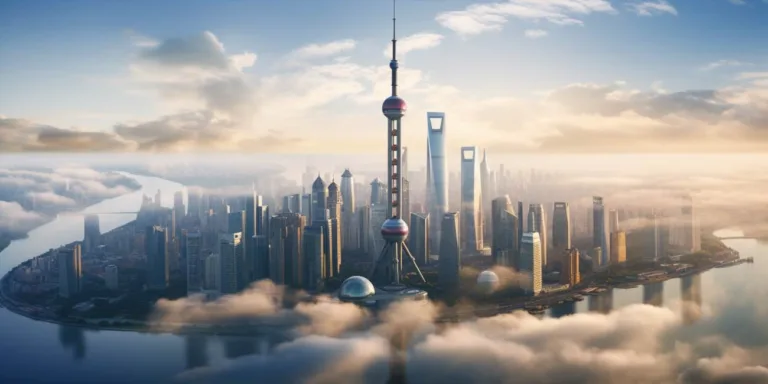Shanghai Tower, a soaring symbol of human ingenuity and architectural prowess, stands tall amidst the vibrant skyline of Shanghai, China. This remarkable structure has captured the imagination of people worldwide, and for good reason. In this article, we will delve into the awe-inspiring journey of the Shanghai Tower, exploring its design, construction, and significance in the world of skyscrapers.
Prezentowany tekst jest efektem naszych działań w partnerstwie z vikki.pl
The genesis of shanghai tower
The conception of the Shanghai Tower can be traced back to the early 21st century when China’s economic rise was in full swing. This ambitious project was initiated to address the growing need for office and commercial space in the heart of Shanghai’s bustling financial district.
Designed by the renowned architectural firm Gensler, the tower’s development aimed to create a structure that seamlessly combined form and function. Its unique design features a twisting, glass façade that symbolizes China’s embrace of innovation and sustainable development.
Architectural marvel
Shanghai Tower’s design is nothing short of extraordinary. It stands at a staggering height of 632 meters (2,073 feet) with 128 floors, making it one of the tallest buildings in the world. The twisting design not only serves an aesthetic purpose but also has functional benefits. The rotation of the building reduces wind load and enhances energy efficiency, a testament to the tower’s commitment to sustainability.
The interior of the tower is equally impressive. The building houses a myriad of offices, hotels, observation decks, and retail spaces. Its observation deck, located on the 118th floor, offers visitors a breathtaking panoramic view of the city and the Huangpu River below.
Construction challenges
Building a structure of this magnitude was not without its challenges. The construction of Shanghai Tower was a herculean task that required innovative engineering solutions. The tower’s foundation had to be designed to withstand the region’s high water table, while advanced materials and construction techniques were employed to ensure its stability in the face of seismic activity.
Additionally, the tower’s eco-friendly features, including a double-skin glass façade and rainwater harvesting system, exemplify its commitment to sustainability. This environmentally conscious approach sets a standard for future skyscraper projects around the world.
Significance in the skyline
Shanghai Tower’s presence on the city’s skyline goes beyond its architectural marvel. It serves as a testament to China’s rapid urbanization and economic growth. The tower is a symbol of Shanghai’s aspiration to be a global financial and cultural hub, rivaling other major cities like New York and London.
Moreover, the Shanghai Tower is a hub for international business and commerce, housing numerous multinational corporations and providing a platform for trade and collaboration. It has become a global icon representing China’s growing influence on the world stage.
Frequently asked questions
1. how tall is shanghai tower?
Shanghai Tower stands at an impressive height of 632 meters (2,073 feet), making it one of the tallest buildings in the world.
2. what is the significance of the twisting design?
The twisting design not only adds to the tower’s aesthetic appeal but also reduces wind load and enhances energy efficiency, making it both functional and visually striking.
3. what is inside shanghai tower?
The tower houses offices, hotels, observation decks, and retail spaces. The 118th-floor observation deck offers stunning views of Shanghai and the Huangpu River.
In conclusion, Shanghai Tower is a testament to human innovation and a symbol of China’s economic and architectural prowess. Its remarkable design, towering height, and sustainability features have secured its place among the world’s most iconic skyscrapers. This architectural marvel not only enhances Shanghai’s skyline but also reflects China’s rise on the global stage.
Zobacz także:






